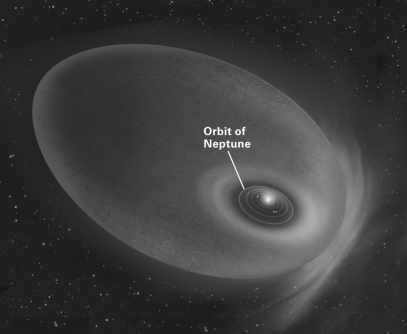A) cooler and more able to flow
B) hotter and more able to flow
C) cooler and less able to flow
D) hotter and less able to flow
F) C) and D)
Correct Answer

verified
Correct Answer
verified
Multiple Choice
Glass is different from a mineral because it ________.
A) is not naturally occurring
B) is not a solid
C) does not have atoms arranged in an orderly pattern
D) contains carbon and is therefore organic
F) C) and D)
Correct Answer

verified
Correct Answer
verified
Multiple Choice
The most common minerals within Earth are ________.
A) silicates
B) carbonates
C) oxides
D) hydroxides
F) A) and D)
Correct Answer

verified
Correct Answer
verified
Multiple Choice
Which of the following statements about Earth's core is NOT true?
A) Its metallic content is likely similar to what has been found in metallic meteorites.
B) It is partly liquid and partly solid.
C) It is composed of an iron alloy (mostly iron with a few other metallic elements mixed in) .
D) By volume,it is the largest compositional layer of the Earth.
F) A) and D)
Correct Answer

verified
Correct Answer
verified
Multiple Choice
From left to right,correctly label each section of this slice of the Earth.Note that 1 starts at the surface of the Earth and 6 ends at the center of the Earth. 
A) crust,liquid outer core,transition zone,solid inner core,upper mantle,lower mantle
B) crust,upper mantle,transition zone,lower mantle,liquid outer core,solid inner core
C) crust,transition zone,upper mantle,lower mantle,liquid outer core,solid inner core
D) transition zone,crust,liquid outer core,solid inner core,upper mantle,lower mantle
F) A) and B)
Correct Answer

verified
Correct Answer
verified
Multiple Choice
If one were to see a comet passing by Earth,it is likely that this comet originated from ________.
A) the asteroid belt
B) the Kuiper belt
C) a neighboring galaxy
D) interplanetary space
F) All of the above
Correct Answer

verified
Correct Answer
verified
Multiple Choice
If one were to ride a hot air balloon up into the atmosphere,one would experience the concentration of gases ________.
A) becoming denser
B) becoming less dense
C) remaining the same
D) increasing for the first 10 km,then starting to decline
F) All of the above
Correct Answer

verified
Correct Answer
verified
Multiple Choice
Earth's geothermal gradient is the rate of temperature change incurred by ________.
A) increasing altitude in the atmosphere
B) increasing depth at ocean trenches
C) traversing from either pole toward the equator
D) traversing down within Earth's interior
F) C) and D)
Correct Answer

verified
Correct Answer
verified
Multiple Choice
The lithosphere lies directly above the ________.
A) transition zone
B) crust
C) asthenosphere
D) lower mantle
F) A) and D)
Correct Answer

verified
Correct Answer
verified
Multiple Choice
Substances that can be transformed to a gas at relatively low temperatures are termed ________.
A) glasses
B) melts
C) volatiles
D) mineraloids
F) A) and B)
Correct Answer

verified
Correct Answer
verified
Multiple Choice
The Moho ________.
A) lies at uniform depth everywhere it is found in Earth
B) is found deeper underneath continents than under oceans
C) is found deeper underneath oceans than under continents
D) is found well below the crust/mantle boundary
F) B) and C)
Correct Answer

verified
Correct Answer
verified
Multiple Choice
The velocities of seismic waves traveling from earthquake foci ________.
A) are uniform throughout all layers of Earth
B) decrease at a constant rate with depth
C) increase at a constant rate with depth
D) generally increase with depth,but occasionally make abrupt jumps
F) B) and C)
Correct Answer

verified
Correct Answer
verified
Multiple Choice
The region of space that contains all of the material of our Solar System (shown below) is termed the ________. 
A) Kuiper belt
B) heliosphere
C) cryosphere
D) Oort cloud
F) A) and C)
Correct Answer

verified
Correct Answer
verified
Multiple Choice
In the whole Earth,the four most common elements (by mass) are oxygen,silicon,magnesium,and ________.
A) copper
B) lead
C) iron
D) zinc
F) A) and B)
Correct Answer

verified
Correct Answer
verified
Multiple Choice
The densest layer of Earth is the ________.
A) crust
B) mantle
C) outer core
D) inner core
F) B) and D)
Correct Answer

verified
Correct Answer
verified
Multiple Choice
Hot,liquid rock beneath Earth's surface is termed ________.
A) lava
B) magma
C) volatiles
D) mantle
F) B) and C)
Correct Answer

verified
Correct Answer
verified
Multiple Choice
As compared to the rocks that make up the crust,Earth as a whole is ________.
A) considerably more dense
B) considerably less dense
C) slightly less dense
D) about the same density
F) A) and B)
Correct Answer

verified
Correct Answer
verified
Multiple Choice
Of the three primary compositional layers of the Earth (crust,mantle,core) ,which is the thickest layer?
A) crust
B) mantle
C) core
D) The mantle and core are the same thickness.
F) A) and B)
Correct Answer

verified
Correct Answer
verified
Multiple Choice
Earth's magnetic field is generated by the ________.
A) flow of the liquid inner core
B) flow of the liquid outer core
C) convective flow of the mantle
D) magnetic minerals within the crust
F) None of the above
Correct Answer

verified
Correct Answer
verified
Multiple Choice
Presently,Earth's atmosphere is dominated by which two gases?
A) hydrogen and helium
B) oxygen and carbon dioxide
C) nitrogen and oxygen
D) carbon dioxide and sulfur dioxide
F) A) and C)
Correct Answer

verified
Correct Answer
verified
Showing 21 - 40 of 52
Related Exams